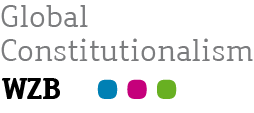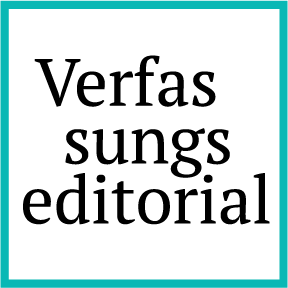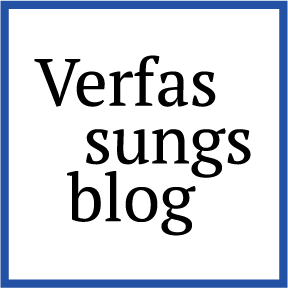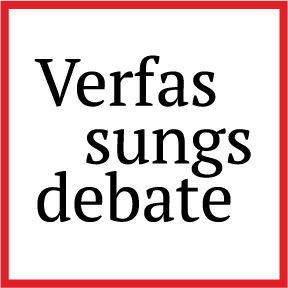How the Sausage Is Made, or Lobbying by the Meat Industry
“Laws Are Like Sausages. It Is Best Not to See Them Being Made.”
This quote, which is often (but perhaps mistakenly) attributed to Otto von Bismarck, unites the two themes of this contribution: lobbying and the meat industry.
Lobbying is the attempt by individuals or entities with no legal authority in the lawmaking process to influence those who hold such authority. It encompasses a broad range of practices, from direct contacts between lobbyists and lawmakers (“inside lobbying”) to attempts to influence them indirectly via public opinion (“outside lobbying”), e.g., via the media or advertising.
Meat can be broadly defined as “animal tissue considered especially as food”. The concept of “meat” itself is controversial and has been the object of much lobbying and litigation. On 2 May 2025, the Swiss Federal Supreme Court ruled that designations referring to an animal species used for meat substitutes of plant origin (such as planted chicken or vegan pork) are not admissible because this terminology is misleading. By contrast, meat-related terms, like “steak”, “burger”, “sausage”, etc., are still allowed.
Despite the negative externalities of meat production, be it for public health, the environment, and, of course, animals themselves, the consumption of meat is still on the rise in many countries in the world, and the regulation of meat production remains lax. One important reason for this lies in the influence that the meat industry has been exerting on lawmaking. Lobbying by the meat industry is regularly in the headlines, including in Switzerland. In September 2024, its French-speaking Radio Télévision Suisse (RTS) released an extensive documentary on meat lobbying, highlighting how the industry attempts to convince “us”, consumers, but also political decision-makers, about the benefits of meat. In January of this year, the cantonal parliament of Vaud discussed a proposal aiming to prohibit the advertising of plant-based “steaks”. In Valais, the cantonal parliament accepted such a proposal in December 2024. Of course, lobbying is not the monopoly of the meat industry. As highlighted by another Swiss news outlet, the “lobby of meat alternatives” is also getting organized. Moreover, lobbying is not necessarily bad: instead, it is an ambivalent practice.
Lobbying creates a basic tension: on the one hand, there is a need for the administration and the legislature to benefit from information and expertise, as well as from the opinions of those who are affected by legislation. In short, there is a need for lobbyists’ input to inform lawmaking. On the other hand, lobbying may run counter to democratic principles, since lobbies are not part of the chain of political representation that connects citizens with their representatives.
Lobbying raises various challenges. First, said basic tension is arguably even greater when lobbying is conducted on behalf of sectors that generate significant externalities, such as the meat industry, and when these sectors can rely on considerable resources to support their lobbying activities. Second, there is almost no lobbying regulation in place in most jurisdictions, which means that lobbying is usually legal unless it violates the law of bribery or relevant disclosure obligations, when such obligations exist at all (for an overview of the limited regulation currently in force in Switzerland, for instance, see here).
In some respects, the meat industry resembles and/or overlaps with other industries, to which it is frequently compared. One may especially mention the tobacco industry, the food industry, the fossil fuel industry, and the agricultural industry. One challenge when it comes to highlighting the specificities of meat lobbying is that meat is a broad label. Accordingly, lobbying by the meat industry encompasses many different strategies and interest groups. Moreover, these strategies are applied in various jurisdictions, all of which have their own regulatory frameworks. Meat lobbying happens at the domestic level, but also at the international and supranational levels.
Still, two specificities of meat lobbying are worth highlighting. First, the meat industry’s inside lobbying appears to be well-established and effective. The industry is closely linked to agricultural interest groups, which have traditionally been highly organized and receive support across the political spectrum. Second, the meat industry heavily relies on outside lobbying due to the importance of maintaining a strong consumer base. As we will see, some of this outside lobbying happens via the media and PR/advertising, but also via collaborations with scientific experts.
Some examples of problematic lobbying practices (“meatsplaining”)
Inspired by the now-famous term “mansplaining” used by American essayist Rebecca Solnit in Men Explain Things to Me (2015), Professor Jason Hannan and the contributors to his edited volume recently coined the term “meatsplaining”, which refers to the rhetoric of denial used by the animal agriculture industry to deny the negative externalities of meat production and consumption. The word “meatsplaining” can also be used to highlight problematic lobbying strategies deployed by the industry.
The remaining sections of this blogpost highlight three problematic examples of meat lobbying: sponsored media content, or the strategy of camouflage; sowing doubts, or the strategy of alternative scientific evidence; and conflicts of interest, or the strategy of blurring the lines between the public and the private. The last section provides a short normative evaluation of these strategies, with reference to the OECD’s three pillars of lobbying regulation, namely transparency, equality, and integrity.
Sponsored content, or the strategy of camouflage
The first strategy is the use of sponsored content in media outlets (for example, pertaining to US media outlets, see here). Let us take the example of an article published on 12 April 2021 in the NZZ, one of the main Swiss newspapers. The article, titled “As a consumer, one can trust Swiss agriculture and its products” (Als Konsument darf man Vertrauen in die Schweizer Landwirtschaft und ihre Produkte haben), was sponsored by and created at the request of Proviande, one of the main meat interest groups in Switzerland. Because the article is seamlessly integrated into the newspaper’s design, readers need to be very attentive to notice that this is not a regular newspaper article. This is also what the Swiss Press Council noted in response to a complaint concerning another sponsored article pertaining to meat published on 2 June 2019 in the NZZ am Sonntag (NZZaS) and titled “Superhero Pork” (Superheld Schweinefleisch) (see Jakob Merane’s analysis of this case, which includes a screenshot of the article). The Swiss Press Council held that the NZZaS had violated Section 10 of the Declaration on the Rights and Duties of Journalists and of the corresponding Directive 10.1, which requires the separation of advertising and editorial content. The Press Council reached similar conclusions in other cases pertaining to sponsored meat content (see e.g. here).
As the NZZ explains in its guidelines on native advertising, sponsored content is paid for by third parties, but created upon their request by the newspaper’s content creation team. Who assumes editorial responsibility for such content? The NZZ’s article of 12 April 2021 indicates that while it is their content creation team that created the article, it is the interest group (Proviande) that is responsible for its content. Yet, readers trust the press due to its adherence to deontological norms, including the responsibility for fact-checking (see Directives 1.1 and 3.1). Such practices are all the more problematic considering Meta’s recent decision to stop relying on fact-checking, which makes it even more important for the traditional media to fill this gap and to ensure factual accuracy, as legal scholars Sophie Weerts and Mathieu Fasel recently argued in an op-ed published in the Swiss newspaper Le Temps.
Another example featured in the aforementioned documentary is an article published in another Swiss newspaper, Le Matin Dimanche. The article is titled “The three biggest myths around meat” and is also sponsored by Proviande. As highlighted in the documentary (see here, at 18’37’’), the article misrepresents statements made by the Intergovernmental Panel on Climate Change and refers to dubious studies on meat. Again, the article is seamlessly integrated into the journal’s design, even if the word “sponsored” appears at the top and in the bottom right-hand corner. In 2023, the First Chamber of the Swiss Fair Trading Commission (Schweizerische Lauterkeitskommission) held that the article’s commercial character was clearly identifiable as such and that there had been no violation of Principle B.15a of the Swiss Fair Trading Commission, which also requires separating editorial from commercial content.
This brings us to a related issue and lobbying strategy that won’t be discussed in detail in this blogpost, namely, the strategy of relying on PR and advertising, e.g., for the purposes of greenwashing, or what Felix Delerm, Anna Galmiche, and Melanie Levy refer to as healthwashing (i.e., toning down the health externalities of meat consumption). The use of specific discursive strategies (see e.g. the examples here) or “frames” (see e.g. here) by the meat industry is well documented in the literature (see also here).
Sowing doubts, or the strategy of alternative scientific evidence
The second problematic “meatsplaining” strategy consists of relying on scientific experts to “obscure the truth” by sowing doubts, as Naomi Oreskes and Erik Conway famously highlighted in their book Merchants of Doubt (2010), which focuses on tobacco consumption and climate change. This strategy is typically deployed by invoking alternative scientific evidence, which is sometimes produced by scientists funded by the industry, and by relying on studies that do not meet standards of academic peer review and scientific integrity (on this problem, see e.g. here and here). A recent article published in the American Journal of Clinical Nutrition found that studies authored by researchers with disclosed ties to the red meat industry were almost four times more likely than independent studies to conclude that the consumption of unprocessed red meat had a favorable or neutral effect on cardiovascular health.
The phrase “merchants of doubt” has also been used in relation to Big Meat, for instance, in a report published in July 2024 by the Changing Markets Foundation. The strategy of sowing doubts can especially be observed whenever important scientific findings about meat production and consumption are released (for example, see here and here). These lobbying practices are problematic not only because they discredit scientific research and are misleading, but also because they contribute to the polarization of the public debate and of scientific research itself. This polarization can also be observed in other fields, such as international tobacco control.
Conflicts of interest, or the strategy of blurring the public-private boundary
A third problematic “meatsplaining” strategy relies on conflicts of interest, i.e., on blurred boundaries between the public and the private. This can, for example, happen when public officials have strong ties to a particular industry (especially financial ones), which puts their independence at risk.
In the United States, the US Department of Agriculture has often been criticized from this perspective. Another example is that of the US dietary guidelines, which are elaborated by an Advisory Committee and then approved by the US Departments of Agriculture and Health and Human Services. This advisory committee has often been criticized for its proximity to the food industry, including the meat industry. In 2020, 13 of the 20 committee members had ties to the food industry.
These conflicts were already flagged by Marion Nestle in the 1990s, who showed that over time, the federal recommendations to reduce dietary fat through changes in meat consumption were increasingly toned down in response to significant pressure by the food industry, including the meat industry. The recommendations went from a clear recommendation to decrease meat consumption in 1977, to a suggestion, in 1992, of consuming “two to three servings” that “should be the equivalent of 5-7 ounces of cooked lean meat” (i.e., 140 to 200 grams). The table included on p. 489 of Nestle’s article illustrates this progressive dilution of the federal recommendations.
Yet another example is the US Department of Agriculture’s food pyramid, which has also been the object of intense lobbying over time, including by the meat industry. Like the federal recommendations, the food pyramid gradually evolved, going from a pyramid where meat appears in a relatively small section in the upper half (1992-2005; see here, p. 17), to one where meat is placed at the same level as other foods and has a strong visual presence (2005-2011; see here). Finally, in 2011, the US Department of Agriculture replaced the pyramid with a plate that reflects what is called a “personalized approach to healthy eating”, and where “protein” takes up approximately one quarter of the space.
Why Institutional Integrity Should Be the Guiding Principle of (Meat) Lobbying Regulation
How should we evaluate these meat lobbying practices? According to the OECD, lobbying and its regulation should be governed by three main principles: transparency, equality of access, and integrity. Each of the three strategies I have highlighted seems problematic from these three angles. As regards transparency, all three strategies aim at misleading the public by hiding their true nature. As regards equality, all three of them require adequate resources, which are not equally available to all interest groups. As a result, interest groups with significant resources can be expected to exert an outsized influence on public opinion and lawmaking processes. Finally, as regards integrity, all three strategies depend on the cooperation of specific institutions whose integrity they simultaneously put at risk.
As we have seen, the meat industry relies on the press, academia, and politics to implement the three strategies we looked at. In doing so, it endangers the integrity of media, academic and political institutions, all of which have a public interest mandate: to inform citizens (for the press), to produce knowledge (for academic institutions), and to create laws and policies in the public interest (for political institutions).
As I argue in a forthcoming monograph on lobbying and constitutional law, lobbying regulation must aim to strengthen institutional integrity by ensuring that institutions have the required independence to fulfil their mandate. This is exactly what is at stake (!) here: to ensure that the meat industry can play a constructive role at the table (i.e., in the lawmaking context and in the public debate), the various institutions involved need to strengthen their own normative frameworks to protect their public mandate, and to avoid being instrumentalized by special interests.



